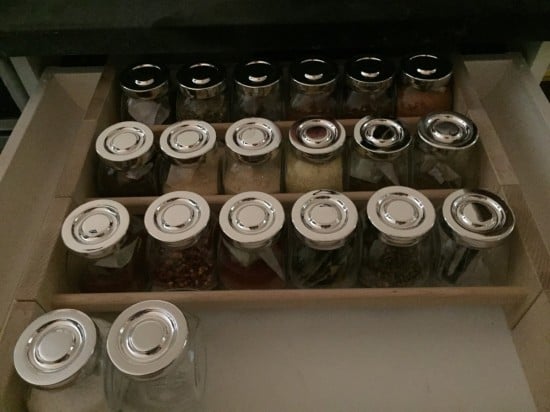IKEA items used: LILLÅNGEN medicine cabinet
Turn your medicine cabinet into a MagicMirror that displays the time, weather forecast, your personal calendar and the news, with my IKEA Hack:
![LILLÅNGEN MagicMirror with Raspberry Pi]()
This is my second hack and it was very intense and time consuming, but I definitely wanted to turn my medicine cabinet into a magic mirror and look how awesome it looks!
There are plenty items you need to buy to build this MagicMirror:
For the “woodwork”:
- LILLÅNGEN medicine cabinet (I chose the one with only one door)
- Two-Way-Mirror (at the local glass store – measures were 39,3 x 63cm. Take a polished one)
- Plat wood to close space behind display (I took 4mm thin wood, measures were 39,5 x 62,5)
- Screws
- Ducktape
- Mirrortape
For the technique:
- Raspberry Pi 3
- Micro SD Card (Min. 8 GB)
- HDMI Cable (a short one)
- Cable and power adaptor for Raspberry (take a strong power supply and a cable long enough to get the distant to the next socket
- An old Laptop display (I used a display with the size of 15,6“ (around 36x25cm), but that was to close to the wood edges. (Spoiler: The wood broke, so maybe use a smaller display)
- Suitable Controller for the display (So you can power and connect the display to the raspberry)
- Power adaptor for the Controller
As you can see, there are plenty items you need to purchase, so the magic mirror is not that cheap. I don’t really know exactly how much money is spend, but I think it was about 150€. As the hack took me about 8-10 hours, I will describe it in steps.
1. Step: Installing the software
Before hacking the medicine cabinet, you have to get used to and configure the Raspberry Pi. The inventor of the MagicMirror published his software, so you can follow the steps to get the Raspberry ready. Then try it with the display outside of the cabinet, so you know it’s working. Here is the link to the software.
2. Step: Working on the door
First of all you have to get rid of the old mirror. That was very easy. Just take the screws of the bars on the bottom and the top. Then you can remove the mirror with a scraper. To remove the glue in the middle you can use some tape. After you removed the old mirror, lay the display on the wood, how you would like it to be at the end and draw a line around it. Then cut the wood with a saw. If the display fits in the hole, you can lay the display with the wood on the backside of the new 2-way-mirror. When it is in the right position, remove the wood, but hold the display. Now you can glue the display to the mirror with some ducktape. Before you glue the wood also onto the mirror, make sure, you don’t need to cut another hole for the hinge (If so, cut it now). Then glue the wood to the mirror with “mirror-tape”. Connect all the wires from the controller to the display and fill all gaps between the wood and the display with tape, to make sure it’s dark behind the mirror. This is a step you have to make very accurate, so the effect will work nicely.
To cover the hole of the display I used the plat wood. Drill holes on the place, where the HDMI-Cable and power cable for the display controller will have to be. And also drill holes for the hinges. Then you can stick the plat wood to the back of the mirror. At the end I attached the bars onto the mirror again, although it didn’t fit that good, because the new mirror was thicker than the new one. After all these steps you can attach the door to the cabinet.
![The back of the mirror]()
(Behind the mirror, before the back wood was attached. Unfortunately the wood of the door broke on two points)
3. Step: Connecting, hiding and testing
The cabinet is ready to get the last steps done. Cut a hole in the backside of the cabinet, where you want to get the cables for the Raspberry Pi and the electrical cord for the display. I attached the display to the bathroom light, so it just turns on, when somebody is in the room. The Raspberry has to be connected to electricity every time, because the time for booting would take to long. To connect the display power supply to the bathroom light, I used a socket, which I installed into the cabinet. Now connect all the cables (HDMI to Raspberry, Display to socket and Raspberry to USB power cable). I covered the devices and cables with a plastic boxes with some holes inside (see picture).
![The tech]()
(I hid the technology later, when the cabinet was already mounted.)
And it’s done.
![LILLÅNGEN MagicMirror with Raspberry Pi]()
![LILLÅNGEN MagicMirror with Raspberry Pi]()
![LILLÅNGEN MagicMirror with Raspberry Pi]()
~ By Maximilian Bartels
The post When LILLÅNGEN mirror gets magic appeared first on IKEA Hackers.

















































































































